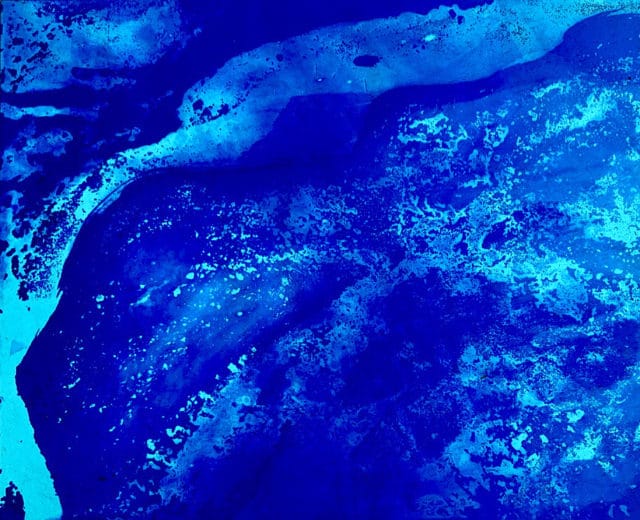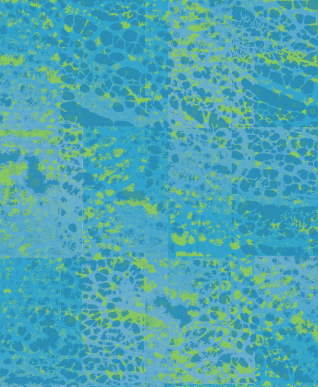New Art Glass Technique: Flashed Glass

Believe it or not, that image above is not computer-generated; it’s an actual glass sample, showcasing one result of some new art glass techniques that I’ve been exploring!
While there are certain techniques that I’ve honed over many years and use repeatedly, I always start new projects with as few assumptions as possible about what approach I will take. Instead, I let the site, client, and project parameters drive the technique. Sometimes, my signature techniques are a perfect fit; but other times, the needs of the project present a chance to explore new directions and new processes.
I’ve been working on this particular technique for a potential new client, who is interested increating a peaceful environment for meditation and prayer. I’ve created numerous installations for chapels, meditation rooms, and liturgical settings; but most often, I’ve used my fused/cast sawtooth glass tiles for these projects. In this case, the glass needs to be flat. So I’ve been enjoying the opportunity to experiment with a different approach.
The glass that I’m using here is called flashed glass which consists of a thin layer of colored glass over a clear or tinted base layer. The colored layer can be protected by a resist and then etched to varying degrees with hydroflouric acid. This process can yield many different effects. For example, if there’s a layer of blue over the clear base, I can tease out a spectrum of lighter blues through the etching, going all the way to clear. Depending on the resist used, the flash can be removed with hard or soft transitions. And then, of course, I can work back in with enamel for a painterly effect, which is one of my favorite parts.

Across all of my work, I’m interested in processes that generate and harness happy accidents. Once this glass is treated, I cut it up and play with randomizing the arrangement. Once I’m happy with the resulting composition, the glass is laminated to a tempered glass substrate.
I’m finding that this new (for me) art glass technique is particularly good for contemplative settings, as it lends itself to a kind of soothing color field quality. Whether or not I end up working with the client that has inspired this exploration, I look forward to finding opportunities to utilize this technique in future projects.

No Comments
Sorry, the comment form is closed at this time.